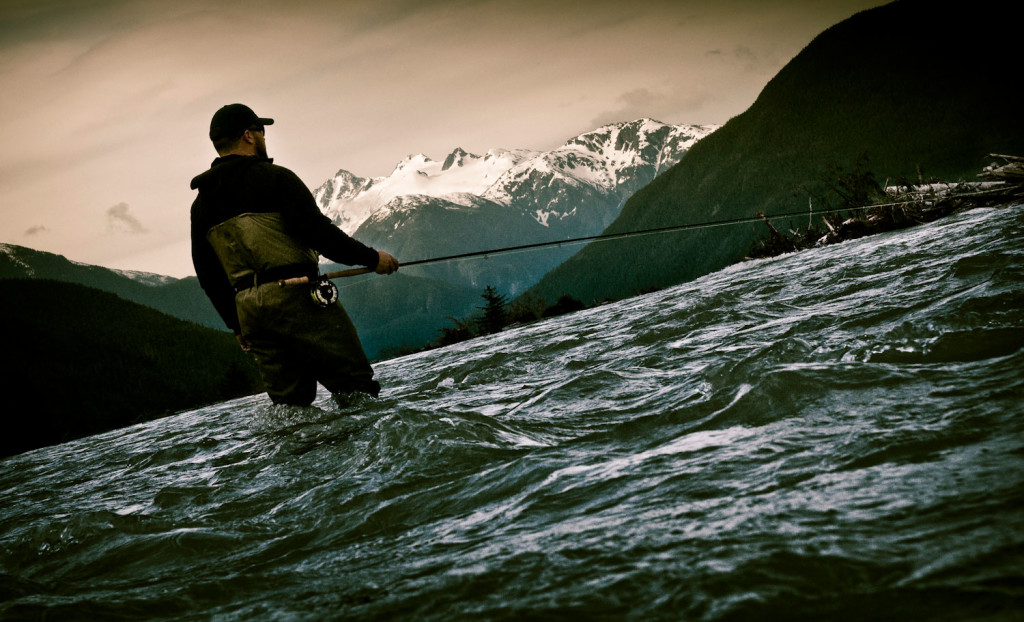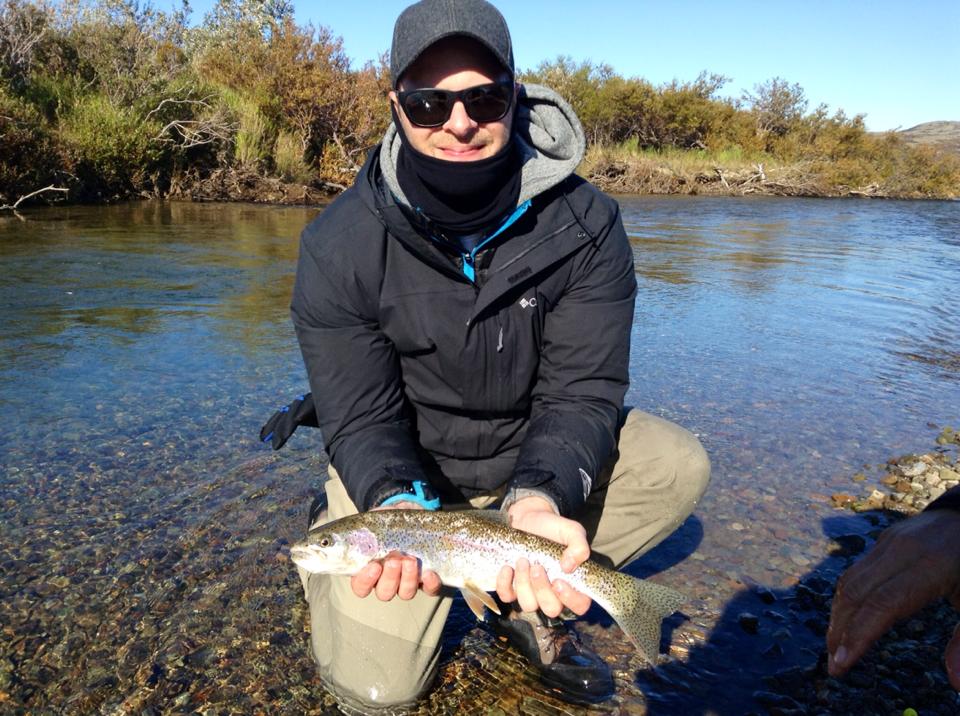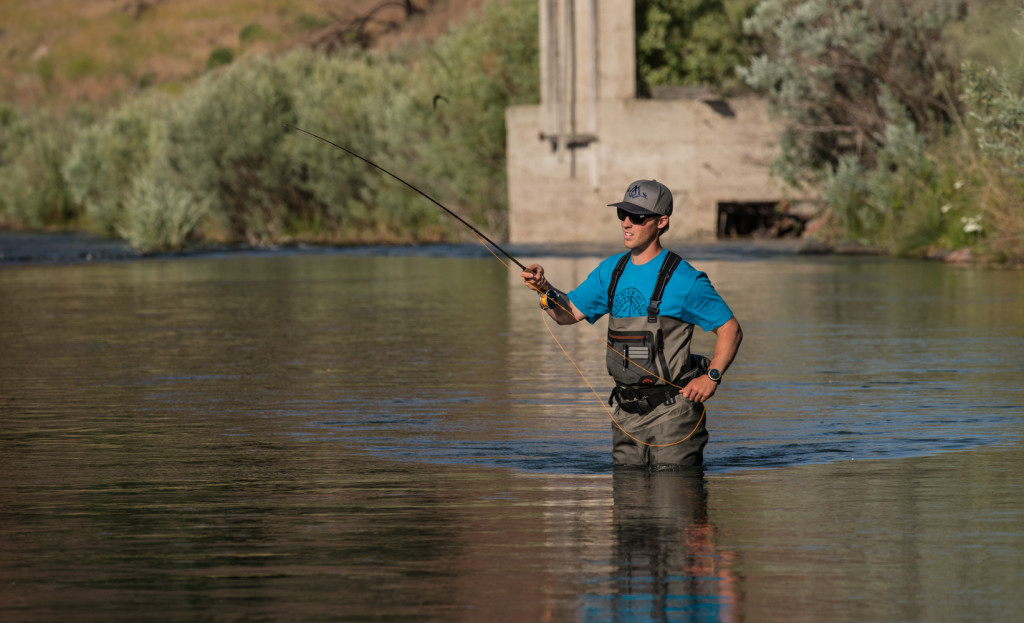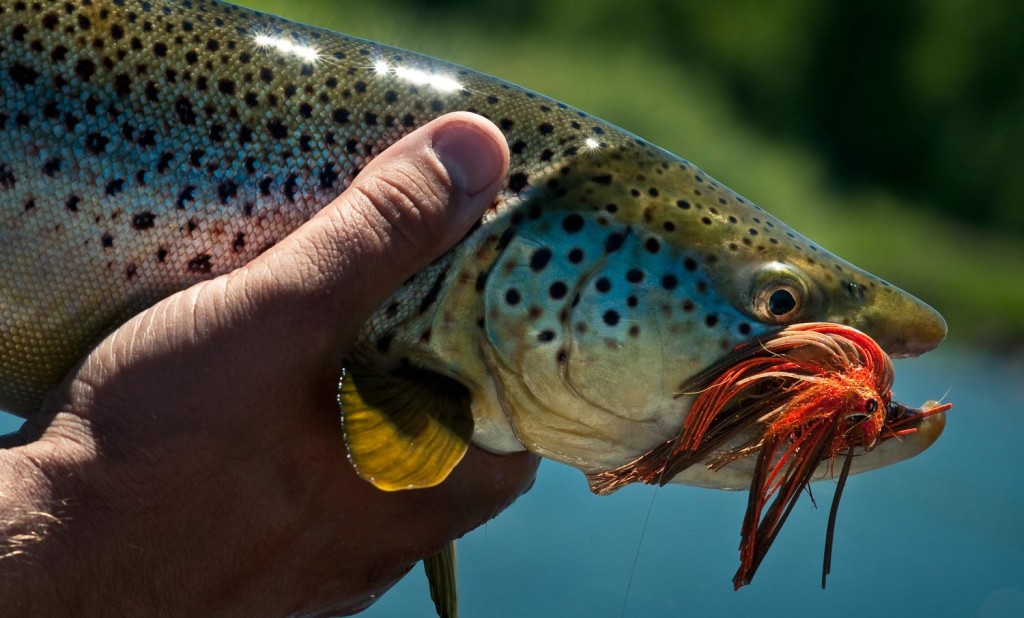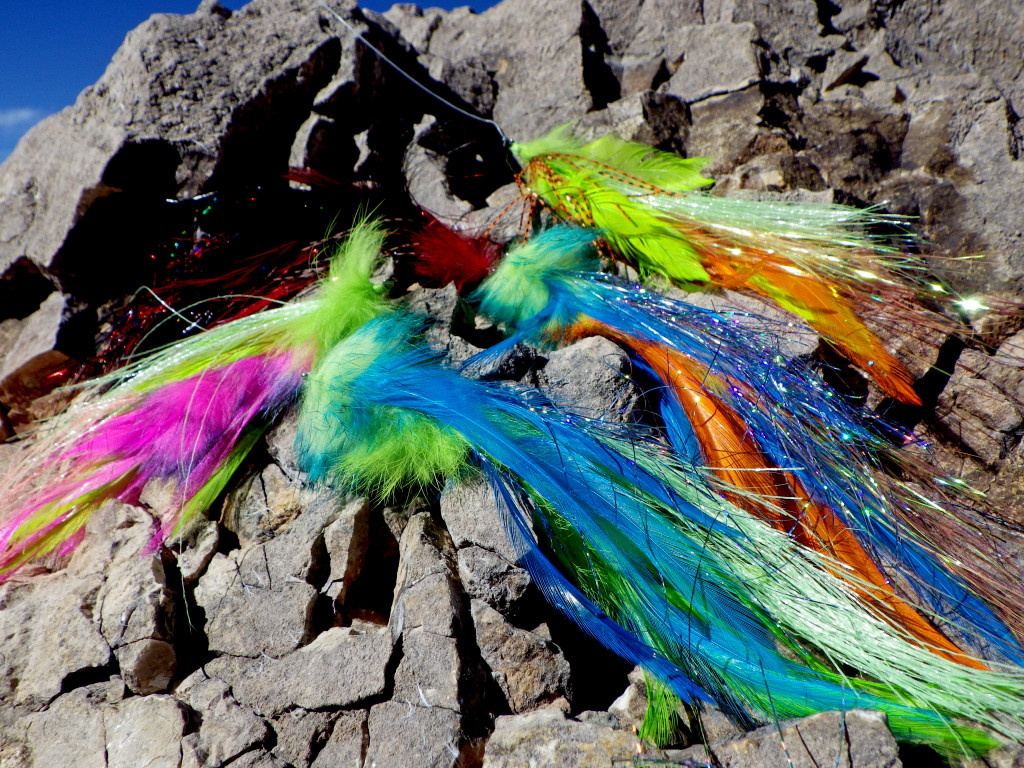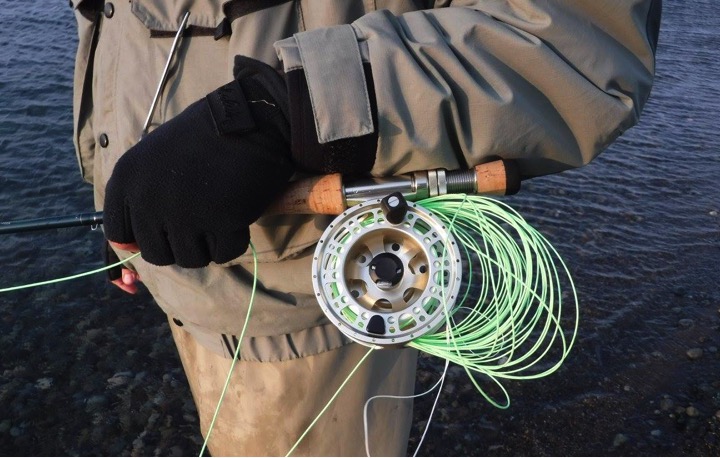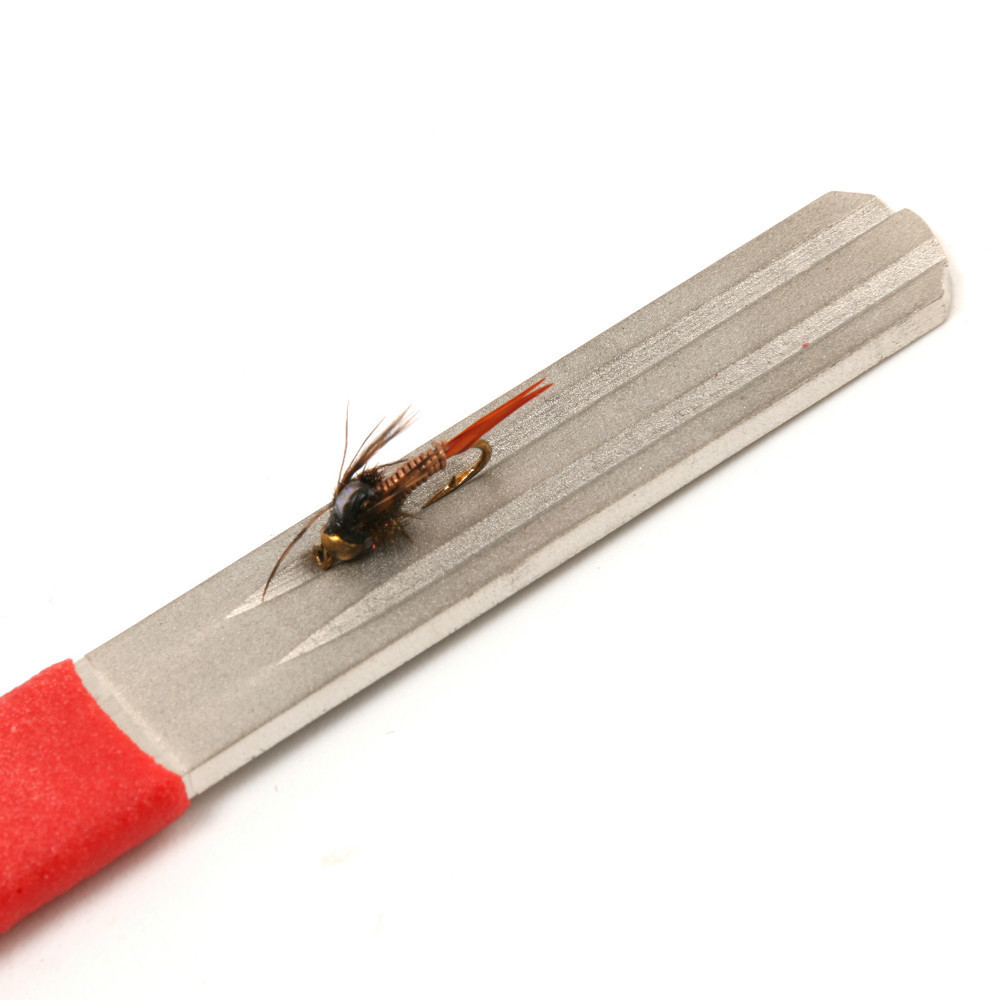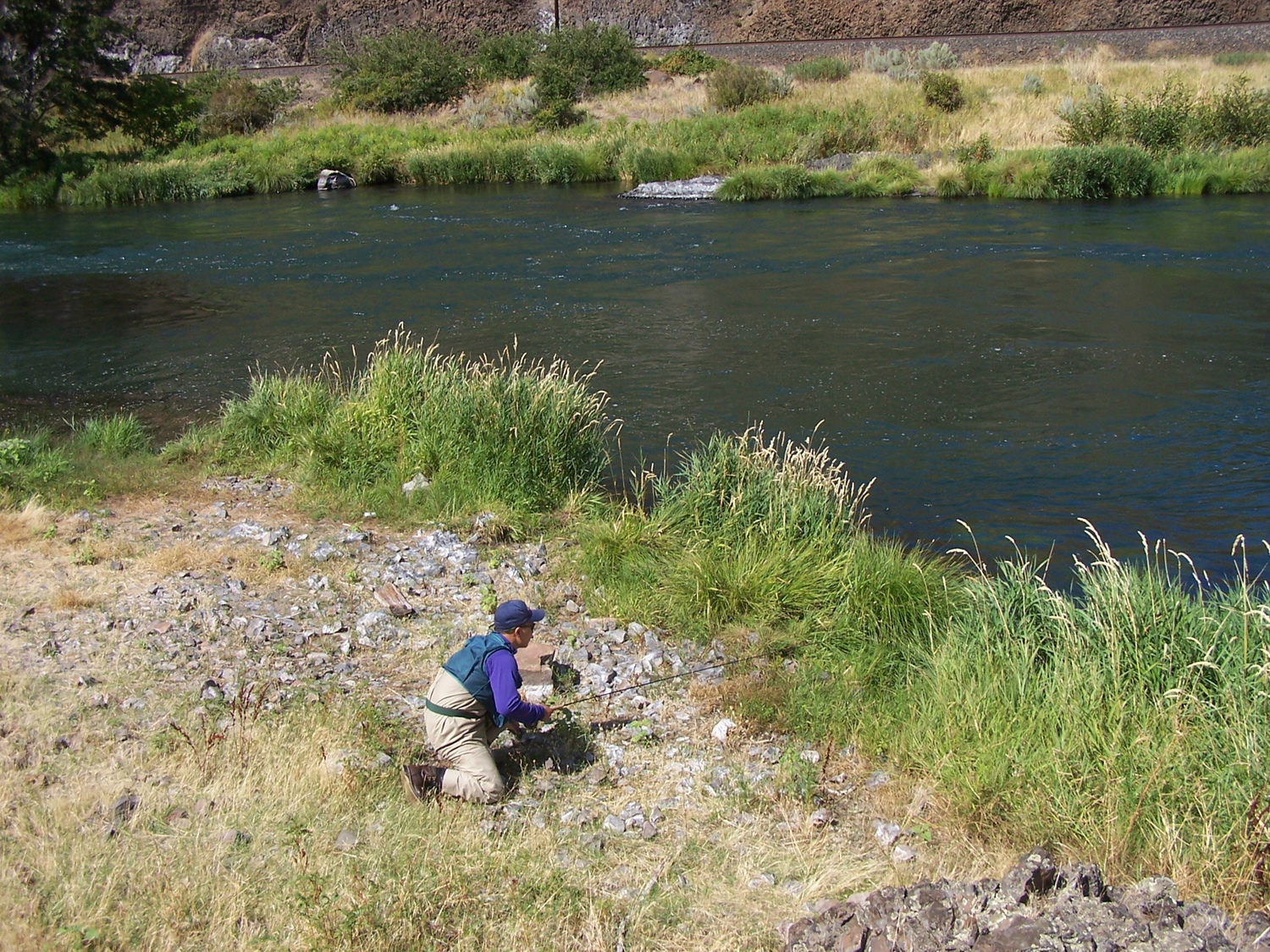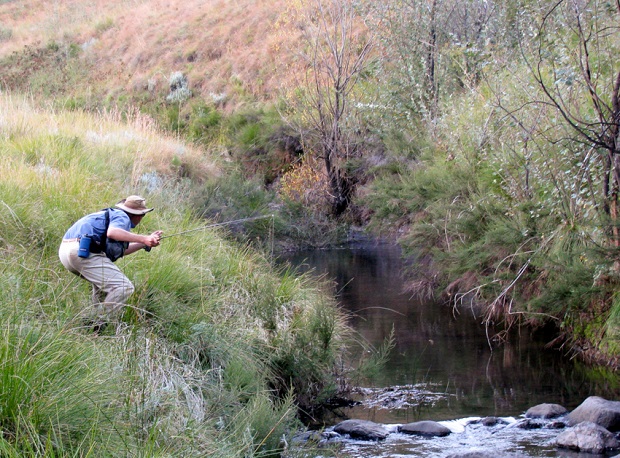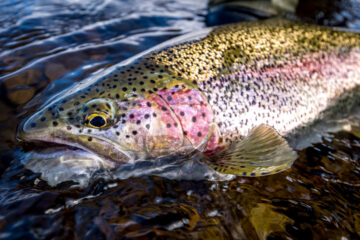If you’re like us, sometimes your enthusiasm gets in the way. Maybe you’re too focused on that perfect presentation. Perhaps you’re daydreaming about how the morning just has to get better, or you’re suddenly up to your waders in incredible action. Once in an Alaskan blue moon, you actually miss one of these 10 trout fly fishing basics.
1. Take a Good Look
The greatest fly fishing guide in Alaska can put you on the best action of your life, but slow down before casting your fate to those trout. Take stock of shade, find the seams, and check out the water and air for the day’s most likely fly options.
2. Make Sure You Can See
A few minutes of quiet observation puts you ahead of the game, but how well can you see that potential action? Polarized sunglasses make it easier to spot trout coursing through sun-spangled waters, and your favorite hat is must-wear eye-shading gear.
3. Wade, Don’t Splash
If the sight and size of waders wasn’t enough to spook them, trout still take off at the sound of your thrashing and splashing from bank to position. Ease into the water slowly, sneak up on steelheads and rainbows, and quietly stalk them with fly fishing finesse.
4. Put Those Nymphs to Work
What’s in the water all year long and makes up the majority of an Alaskan trout’s diet? What type of presentation doesn’t include watching that rainbow race for your dry fly? Don’t deny yourself the productivity that comes from mastering the art of casting nymphs.
5. Big Trout Love Streamers
This is another angle that gets you out of the dry-fly box, and it’s really effective with the big guys. The larger the trout, the more it needs to eat. So, up your chances of landing a hungry trophy by swinging a good streamer presentation.
6. Match Colors With Seasons
It happens. You try your best, and you still can’t figure out which fly color works best. When you’re overcome with indecision, don’t over-think it. Keep it as simple as lighter shades in the summer and dark colors for fall and spring.
7. Pause and Inspect
Wind knots weaken line, hackles need adjustment, and tippets deserve a close look. Some Alaskan fly fishermen check their setup after every cast while others are good with a quick inspection after five or six tries. Mileage may vary, but this tip saves tackle and aggravation.
8. Hooks Need Help
They don’t stay sharp by themselves, and the best down-time maintenance doesn’t always hold up to a stretch of heavy action. Keep a stone or diamond hone handy to touch up hooks that get dull during duty with as many rock strikes as trout bites.
9. When You Stalk, Stay Low
You’ve probably demonstrated this basic to folks who are just learning the art of our sport, but it’s an easy one to forget. Trout that see you coming are gone in a heartbeat even when you’re wearing your drabbest best. Stay low, and stalk like a pro.
10. Try to Avoid Lining
No fly fisherman does this one intentionally, but it’s one of the surest ways to spook rainbows on a sunny day. Go for a location that sets you up for some side casting, and relax. Too many casts let them know you’re there, so ease in close, and try to cast less.
Don’t worry about those palm slap to the forehead moments. They happen to excited greenhorns and sneak up on seasoned trout bums. Some of those snafus make for great stories around our Main Lodge fireplace, so come visit us soon here at No See Um, and let’s all share a good laugh at our less-than-perfect fly fishing selves.
